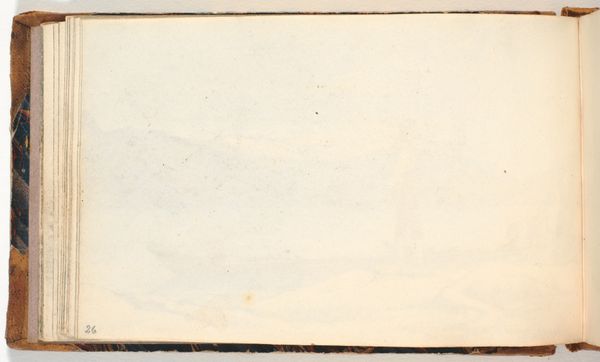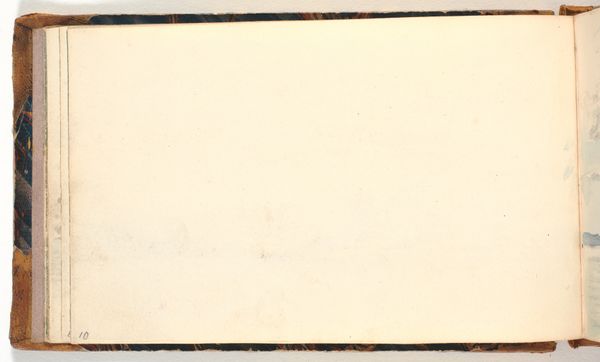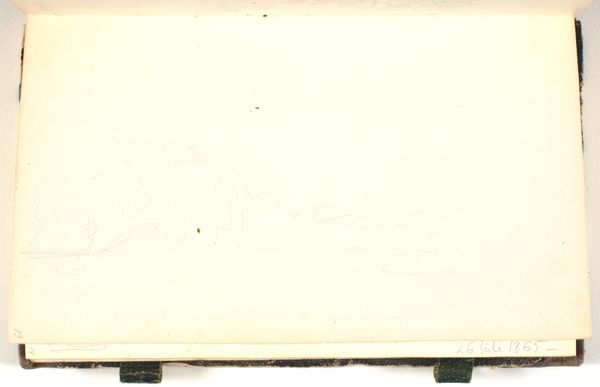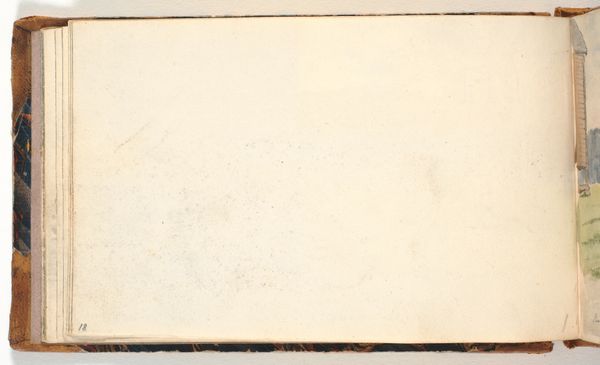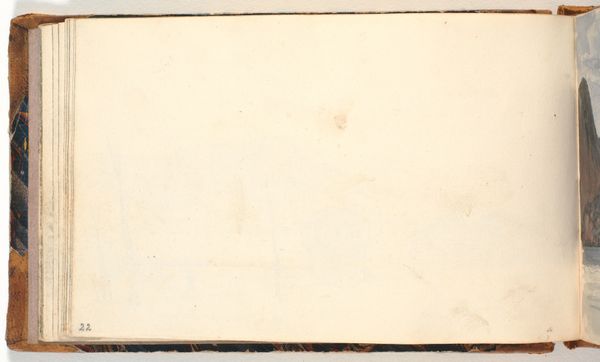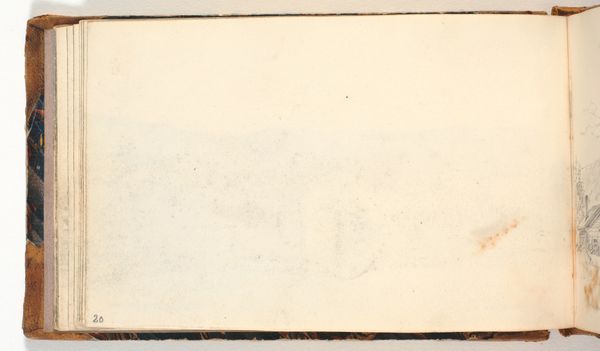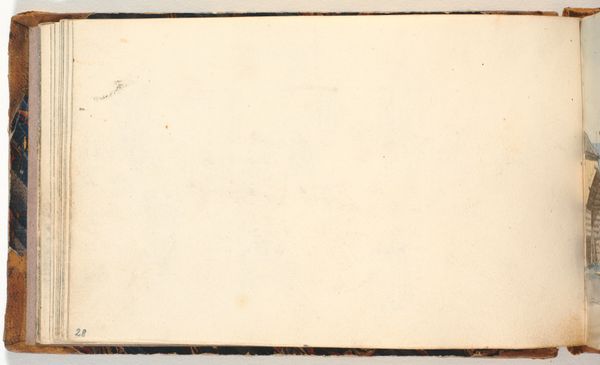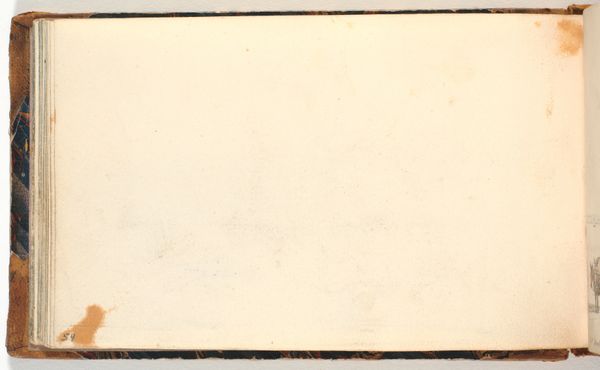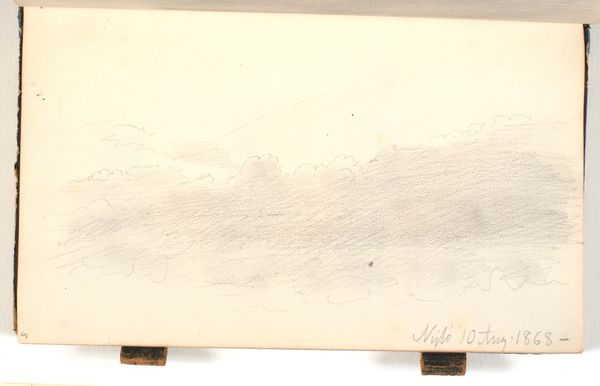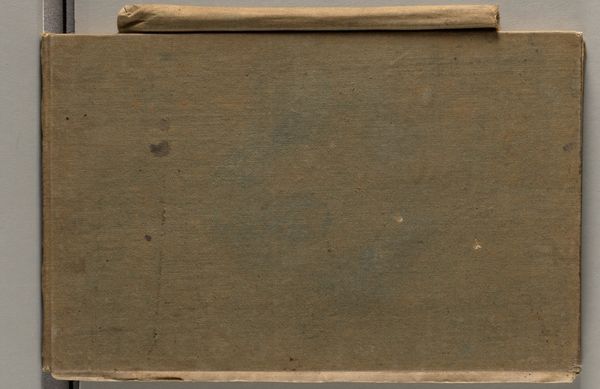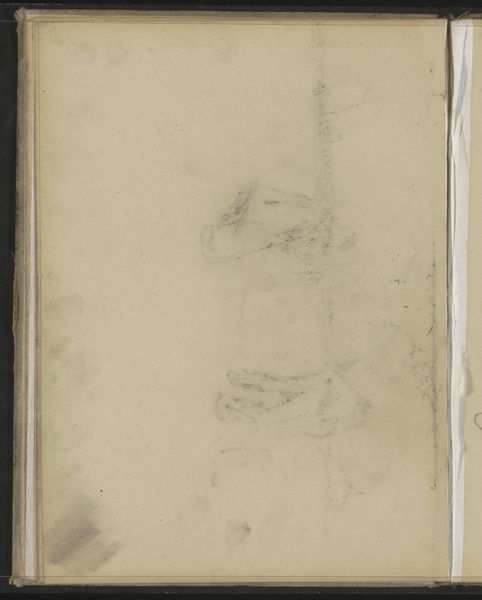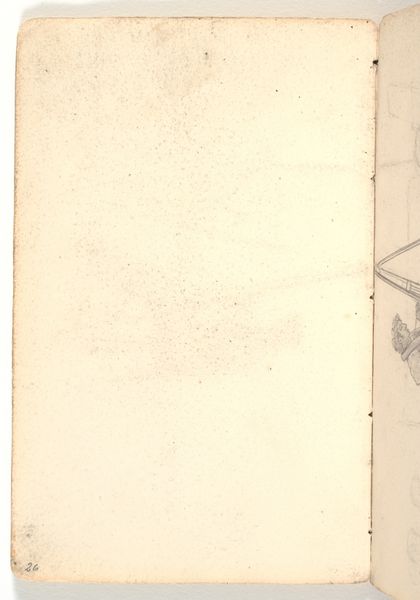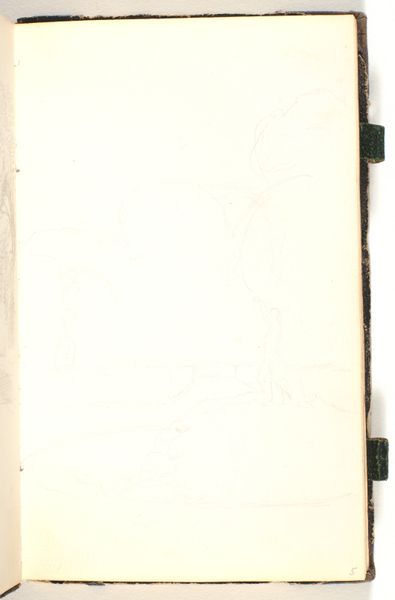
drawing
#
drawing
#
toned paper
#
water colours
#
worn
#
possibly oil pastel
#
muted smudged
#
carved into stone
#
underpainting
#
watercolour bleed
#
watercolour illustration
#
watercolor
Dimensions: 71 mm (height) x 118 mm (width) x 14 mm (depth) (monteringsmaal), 63 mm (height) x 113 mm (width) (bladmaal)
Editor: Here we have "Detailed study of a female breast, and a note" by L.A. Schou, created sometime between 1864 and 1867. It’s a drawing rendered with watercolors, perhaps even some oil pastel, on what appears to be toned paper. There is also some faint script in the upper right. It strikes me as remarkably intimate, even vulnerable. What do you see in this piece, looking beyond the subject matter itself? Curator: Well, the first thing that grabs me is the support itself – this worn paper, clearly from a sketchbook, probably readily available, hints at the quotidian, even economic, conditions of artistic creation. The artist used materials at hand. And then there is a sense of the studio practice involved. Why a fragment, a detail? It draws our attention to the act of observation and recording, the artist’s laboring hand. This wasn’t meant to be hung on a wall, to function as high art. Editor: So, it's less about the completed artwork as a precious commodity, and more about…the process and the resources involved? Curator: Exactly! The materiality screams 'study'. It reveals the inner workings of an artist’s mind, using accessible tools like watercolor – blurring the lines between artistic exploration and the final 'product'. We also should consider the toned paper and possible oil pastel - items sold specifically to be art supplies at the time. Can we find advertisements from 1860's Copenhagen art shops selling such material, and to whom? Were these marketed towards women for education or even leisure, expanding production networks? Editor: I see, by focusing on the materiality of the art, and the tools employed, we get an amazing glimpse into 19th-century workshop dynamics, access, and maybe even social structures. Thanks! Curator: And the piece provokes questions about art's function in society: is it simply about a beautiful outcome, or is it about the method of production, the socio-economic relations that brought that art to our gaze? Always a crucial set of concerns!
Comments
No comments
Be the first to comment and join the conversation on the ultimate creative platform.
